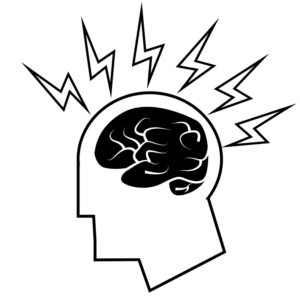Constant, dull aching all over your body. Sleeping for long stretches and waking up exhausted. Stiffness and throbbing. Sadness or irritation that you can’t seem to shake. Grogginess, confusion, and forgetfulness.
Taken individually, each of these life-impairing symptoms could have many causes.
Taken altogether, these symptoms paint a single picture: fibromyalgia.
Harvard Health reports that a full four million Americans have been diagnosed with fibromyalgia. People with fibromyalgia have to deal with multiple symptoms that cause suffering and diminish their work, social, and family lives. But they also have to deal with a persistent question- “is fibromyalgia real?”
If you are having fibromyalgia symptoms, you may be wondering if these are due to other factors- or even if the pain and fatigue is “all in your mind.” Your family, friends, and colleagues may not be convinced that there’s a single medical cause for your symptoms, or may have heard somewhere that fibromyalgia is a myth. People with fibromyalgia can face confusion and skepticism from themselves and others, and it can make getting the treatment they need much harder. Fortunately, the medical community is clear: fibromyalgia is a real medical condition.
According to WebMD:
Fibromyalgia is a syndrome that’s characterized by constant musculoskeletal painthroughout the body, which is accompanied by exhaustion, and problems with, memory, sleep, and mood.
In addition to these primary symptoms, Fibromyalgia amplifies normal and routine sensations of pain, such as pain from headaches and injuries, by altering the way the brain processes signals from pain nerves in the body. It can also create low-grade cognitive impairment, or so-called “brain fog.”
Compounding the effects of this condition, fibromyalgia often goes hand-in-hand with medical issues like:- tension headaches
- irritable bowel syndrome (IBS)
- temporomandibular joint (TMJ) disorder
- rheumatoid arthritis
- migraines
- interstitial cystitis
- depression
- anxiety
One particularly debilitating condition that frequently occurs alongside fibromyalgia is rheumatoid arthritis. In fact, Web MD reports that a full 10-20% of people with fibromyalgia also suffer from rheumatoid arthritis. Rheumatoid arthritis, like fibromyalgia, involves chronic pain throughout the body. But while fibromyalgia creates pain in the soft tissues, rheumatoid arthritis creates pain in the joints. Joints may also become swollen and stiff due to rheumatoid arthritis. Unlike fibromyalgia, rheumatoid arthritis is considered an autoimmune disease- it results from the body’s infection defenses system attacking healthy tissues (in this case, the joints). Researchers aren’t sure what creates the link between rheumatoid arthritis and fibromyalgia, but many scientists think it relates to widespread and chronic inflammation, which is a symptom of both rheumatoid arthritis and fibromyalgia.
With all these painful and problematic direct symptoms, as well as the many associated conditions, fibromyalgia is a potentially life-impairing and chronic condition. Especially when symptoms are not properly addressed, fibromyalgia can lead to impairments in worlds of work, relationships, long-term health, and emotional well-being.
Symptoms of fibromyalgia can start for a number of reasons- or seemingly no reason at all. The start of fibromyalgia symptoms can often be traced back to:
- a physical trauma
- a psychological trauma
- a surgery
- an infection
In many cases, however, isolated symptoms start off without a triggering event and slowly build up in number and strength over time. Women are more prone to fibromyalgia than men, as are adults over the age of 40. People who are overweight or inactive are more likely to have fibromyalgia. And although there’s not a specific gene or gene sequence that;’s tied to fibromyalgia, it does appear to frequently run in families. Some MRI studies have found abnormalities in the part of the brain that processes pain signals from the body, but the way these come about or operate is still unclear. There’s no real consensus on the exact cause of fibromyalgia, and much about this condition remains a mystery.
Not only is the precise cause of fibromyalgia unclear, but the diagnosis of fibromyalgia is also a bit of an uncertain trail-and-error process. There’s no test that can diagnose fibromyalgia. Instead, doctors perform examinations and tests to rule out other causes before arriving at a diagnosis of fibromyalgia. In the past, doctors performed a “tender point exam,” looking for pain on 13 specific parts of the body, but modern diagnostic criteria simply apply to anyone who has experienced pain in the soft tissues of the body for more than three months.
With all these facts in mind, fibromyalgia presents a complex picture:
All this adds up to mean that many people suffering real pain and debilitating symptoms are not immediately taken seriously by their families, friends, and- most importantly- medical professionals. The severity of their symptoms may be downplayed, questioned, or written off as psychosomatic (physical sensations caused by emotional factors).
Sadly, studies also show that older adults and women (both populations affected by fibromyalgia at higher rates) are less likely to be believed by medical and non-medical professionals when they express that they are experiencing serious pain. This is even more complicated by the fact that the fibromyalgia symptoms like poor sleep, memory loss, brain fog, depression, and fatigue can make it harder for patients to advocate for themselves and to get the diagnosis and treatment they need.
If you’re suffering from the chronic pain of fibromyalgia, it’s important to know that you’re not alone and that your symptoms and condition are real- very real. It’s important to persevere in getting the correct diagnosis for your pain. And it’s also important to be aware that effective treatments for fibromyalgia exist.
Web MD reports that it takes the average patient with fibromyalgia a full five years to get a diagnosis. There are probably a number of reasons behind this sad statistic:
- symptoms like pain, depression, and fatigue can make it harder for people with fibromyalgia to have the energy and patience to seek out treatment and navigate the medical system
- complicated overlapping relationship between fibromyalgia and other co-occurring conditions. These conditions can also cause pain, stiffness, and fatigue, such as rheumatoid arthritis, TMJ, interstitial cystitis, and migraines
- many doctors are not experienced in spotting symptoms of fibromyalgia, especially when they occur in connection with depression, rheumatoid arthritis, sleep disorders etc.
- while usually unconscious, bias in society and in the medical profession means that the same people who are most likely to have fibromyalgia (seniors, women, and people who are overweight) are less likely to have their symptoms given full credibility.
- there is no single clear cause for fibromyalgia, and onset is sometimes gradual, so recognizing the start of the condition can be difficult
- there’s no test for fibromyalgia, so other possible causes of widespread pain must be first ruled out one by one
If you have symptoms of fibromyalgia, and are seeking a diagnosis, it can help to track your symptoms so you can give your doctor a clear picture of what’s happening in your body. It can be especially helpful to track the duration and severity of your symptoms each day, so you can present concrete facts about what you’re experiencing. Some telltale signs of fibromyalgia are:
- a constant dull ache in your body’s muscles
- sleeping a lot but still feeling exhausted
- tenderness when touched
- discomfort or pain when sitting for 45 minutes or more
- low-level memory loss or “brain fog”
- changes in mood (depression, irritability etc.)
Be aware that doctors sometimes attribute the pain, fatigue, or other symptoms you’re feeling because of fibromyalgia to another condition that you have, like insomnia or rheumatoid arthritis. This can mean that you wind up prescribed for higher doses of medication intended to treat insomnia, arthritis etc. than you actually need. But fibromyalgia is real and frequently exists alongside these other conditions with overlapping symptoms. If you suspect that fibromyalgia is behind some of your symptoms, be sure to let your doctor know.
If you get a diagnosis of fibromyalgia, you’ll have options for treatment that can help alleviate your pain and improve your sleep. Treatments for fibromyalgia include pharmaceuticals, cognitive techniques, and lifestyle changes. Some of the most common pharmaceutical treatments for fibromyalgia are:
- Over-the-counter (OTC) pain relievers like acetaminophen and naproxen (Aleve) can reduce your perception of pain
- Antidepressants like Prozac and Elavil can ease your aches and fatigue, improve your mood, and may also improve your sleep quality
- Anti-seizure medicines like gabapentin and pregabalin can make you less sensitive to pain
- Muscle relaxants like cyclobenzaprine can also reduce your perception of pain, easing body aches
Unfortunately, many people find that the benefits of medications decrease over time. That means it’s better to add in cognitive and lifestyle treatments as well. The best part of these approaches is that they have no medical side effects, and cost little or nothing. You can make changes to your thinking, habits, and lifestyle such as:
- Exercising regularly. This can be tough for people feeling pain and fatigue, but has been shown to offer real relief and improve sleep and mood. You’ll also reap the side benefit of improved strength and fitness!
- Practicing sleep hygiene, which means avoiding alcohol and caffeine (especially around bedtime), shitting off all screens at least two hours before bed, keeping your bedroom cold and dark, and sticking to a firm and regular bedtime and wake-up time
- Physical and occupational therapy can improve your strength and flexibility, which eases aches and stiffness. You can also learn less uncomfortable ways to perform daily movements like standing up and lifting.
If you’re suffering from the effects of fibromyalgia, it’s essential to know that your condition can be diagnosed and treated. Even more so, it’s essential to keep in mind that your condition is not in your mind- it’s a real medical condition, with real options for treatment.

